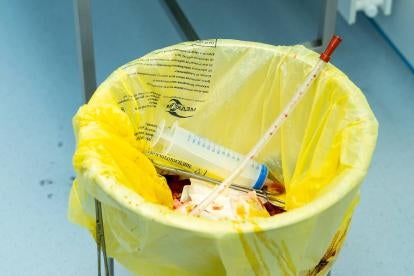As we have noted in prior postings, the Biden administration and the EPA have been relatively aggressive in emphasizing their focus on pursuing environmental justice, which is a notable departure from the priorities of the Trump administration. Increasingly, the Biden administration is focusing on Ethylene Oxide (EtO), a reactive chemical widely used as a sterilizing agent for medical equipment that cannot otherwise be sterilized by heat/steam. EtO may also be used as a component for producing other chemicals, including glycol and polyglycol ethers, emulsifiers, detergents, and solvents. Allegations that exposure to EO may increase the risk of certain cancers have increasingly subjected companies to governmental regulation and/or private tort actions. Notably, the first EtO personal injury case to go to trial resulted in a $363 million verdict in late 2022 involving a plaintiff who resided near a medical sterilization facility (Willowbrook) in Illinois and claimed that her breast cancer was caused by EtO emissions from the plant.
Proposed New EPA Rules Concerning Ethylene Oxide
Last Thursday, in response to concerns long expressed by various environmental justice proponents and other public organizations, the EPA announced proposed new regulations which would tighten regulations concerning EtO exposures (and other potentially toxic chemicals). The regulations are designed to protect both workers in sterilization plants as well as nearby residents. The EPA and those groups supporting tougher regulations concerning EtO emissions have long claimed that EtO is a carcinogen and that emissions from sterilization plants don’t just impact employees within the buildings but also nearby residents. There are approximately 100 commercial sterilization facilities in the US, and many are in close proximity to one another, thereby increasing the combined EtO emissions in certain geographic areas. It has not escaped the attention of various advocacy groups and the EPA that a disproportionate amount of these facilities are surrounded by people of color.
The FDA has warned that decreased medical sterilization plant operations due to health concerns (the facility involved in the recent $363 million verdict is now closed) is causing a shortage in sterile medical device availability necessary for a multitude of medical procedures. Other groups are similarly concerned about the EPA’s new proposals. Citing the impact of these changes to the rules governing EtO exposures, segments of the chemical and healthcare industries warn that EtO sterilization facilities, already operating at capacity, might be forced to shut their doors. The ramifications of and sterilization plant shutdowns would include increased difficulty in scheduling patient treatments in which sterilized equipment must be utilized. For its part, the EPA’s position is that the proposed new regulations would not impact the supply of EtO- they would only impact the emissions of same.
Impact of Proposed New EPA Rules Concerning Ethylene Oxide
As these proposed rule changes wend their way through the system, it is incumbent upon potentially impacted parties to stay on top of developments and to be proactive about compliance. In particular, the chemical and healthcare industries (and to the extent applicable their insurers) must take notice of the increased attention paid to EtO emissions by the EPA. If the new EPA regulations take effect (and even further regulations are in the works), those facilities that have not yet curtailed operations must make sure to be in strict compliance. Both governmental agencies and plaintiff law firms will certainly be paying attention and failure to comply may result in administrative fines and/or lawsuits filed in the tort system. Facilities should retain experts to monitor EtO emissions and ensure that they are below current and proposed future allowable levels, and to provide guidance as to how to reduce emissions if they are above allowable limits.




 i
i

